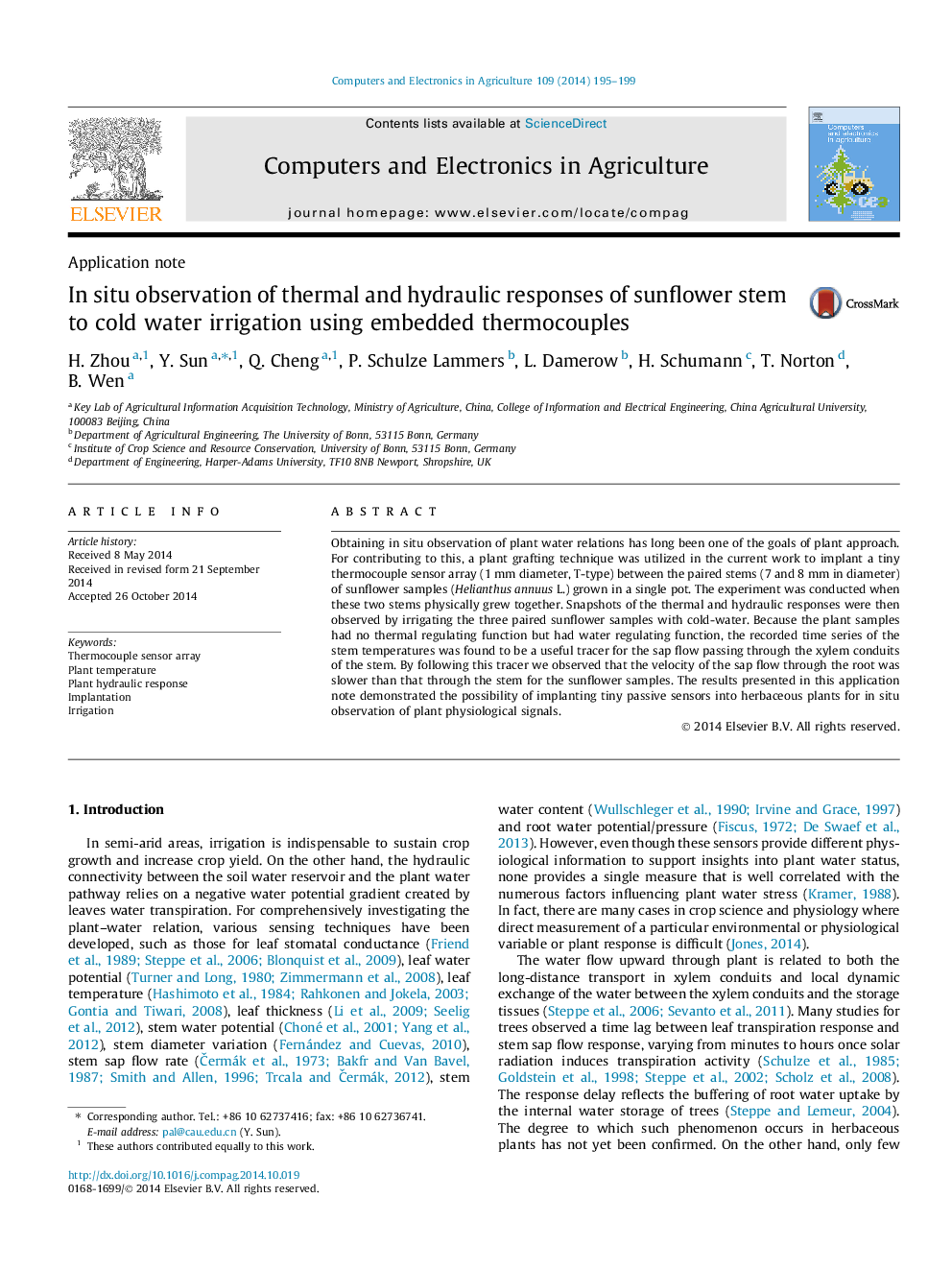| Article ID | Journal | Published Year | Pages | File Type |
|---|---|---|---|---|
| 84240 | Computers and Electronics in Agriculture | 2014 | 5 Pages |
•Implant a thermocouple sensor array between two sunflower stems grated.•Snapshot of the instantaneous thermal responses of the plant to irrigation.•Snapshot of the instantaneous hydraulic responses of the plant to irrigation.•A comparison between root- and stem-hydraulic conductibility.
Obtaining in situ observation of plant water relations has long been one of the goals of plant approach. For contributing to this, a plant grafting technique was utilized in the current work to implant a tiny thermocouple sensor array (1 mm diameter, T-type) between the paired stems (7 and 8 mm in diameter) of sunflower samples (Helianthus annuus L.) grown in a single pot. The experiment was conducted when these two stems physically grew together. Snapshots of the thermal and hydraulic responses were then observed by irrigating the three paired sunflower samples with cold-water. Because the plant samples had no thermal regulating function but had water regulating function, the recorded time series of the stem temperatures was found to be a useful tracer for the sap flow passing through the xylem conduits of the stem. By following this tracer we observed that the velocity of the sap flow through the root was slower than that through the stem for the sunflower samples. The results presented in this application note demonstrated the possibility of implanting tiny passive sensors into herbaceous plants for in situ observation of plant physiological signals.
